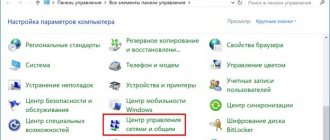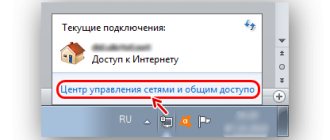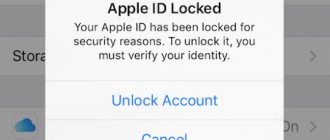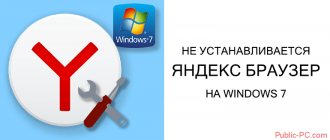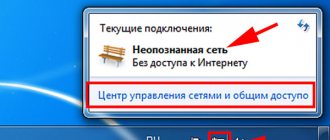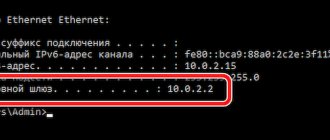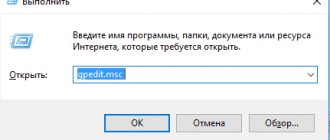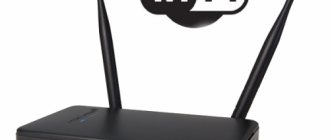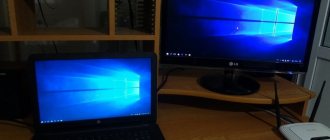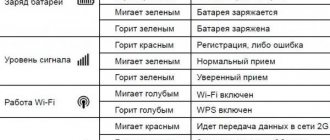The most common option
Don't know what to choose? Do you have a login and password from your provider? Choose PPPoE! This is especially true for Rostelecom.
The second current option in Russia is Dynamic IP.
PPPoE is the most common type of Internet connection in our countries. And in most cases, when the cord comes to you from the entrance, and the login and password for connection are specified in the contract, you need to choose it. Try it, you won't lose anything!
Virtual network
In this case, the subscriber connects using a VPN with the obligatory entry of a name and access code.
This type is divided into the following connection types (encrypted communication protocols):
- PPPoE. This is one of the most common types. In order to provide access to the World Wide Web, you should click “Connect to the Internet” in the settings wizard. Next, click “Set up a connection manually” and specify the connection type of the same name.
- PPTP. To connect to the global network, you just need to click “Connect to workplace” in the setup wizard. After that, select the “Connect to a virtual private network” column. Then enter the VPN server address.
- L2TP. Many modern providers now use this type of connection, so it has also become widespread. To connect, you first need to follow the steps described for the second type and then open the properties and go to the “Network” tab, where in the VPN column indicate: “L2TP with IPSec”.
To find out what type of VPN is used on your PC, you need to click the connection icon in the right corner of the taskbar and enter the “Information” section.
The easiest way
If the previous option didn’t work, and you don’t really want to check all the options, call your provider. I assure you, they will quickly tell you everything, so much so that before you even blink an eye, the Internet will appear everywhere. These are their services, these are their works - they will definitely help you understand the issue.
If you don’t like to make calls, look at the provider’s website from the same mobile phone. Usually they write instructions and provide documentation. If this is not possible, look up the contract; they usually write there the type of connection and all the necessary data to establish it.
How to find out the connection type?
Perform the following steps using Windows tools:
- Open “Control Panel”;
- Enter the “Network and Internet” tab;
- Next, go to the “Network Connections” tab;
- View the active connection (in the example in the screenshot above, it is wireless).
If you need to find out which provider provides communication services, you can visit one of the resources on the Internet to analyze ping.
After waiting for it to complete, information about the World Wide Web provider will be available.
What are the options?
Now let's briefly go over each option. These are the most popular types of WAN Internet connections in Russia and the CIS. One of these options will suit you.
- PPPoE - personally for me (Russia), the most connections fell to this type. The router creates a high-speed connection and requires you to enter the login and password from the contract (enter once). The technology was often used directly from a computer, but recently everything can easily be set up in a router.
- Dynamic IP is the simplest technology and is also very common. For me it’s even adequate. All you need is to connect the provider’s router, and the Internet will work itself. On the router, this “Dynamic IP” type is additionally selected, but many models already enable it by default. This is probably the future.
- Static IP – here you will have to enter the issued IP address. It’s roughly the same as the previous technology, but instead of automatically issuing it, the provider distributes IP addresses manually, so you need to enter it. No login or password required.
- PPTP and L2TP - less common; connection requires a login, password, server address and optionally your static IP. A kind of unification of everything and everyone. Connection via VPN. You can also track it according to the contract. Computers can also work directly with these connection protocols on their own.
Example of setting up a WAN with Dynamic IP on a TP-Link router:
Characteristics of types of Internet
Login methods differ in technology and tariffs for use. The quality of radio communications depends not only on the power of the devices used, but also on the services of suppliers, called providers.
Online operators provide wired and wireless communication lines to subscribers.
In large cities, companies provide customers with a large selection of technologies for using the Internet, and from a variety of proposals you can choose a convenient offer. In small settlements, services are insignificant and you have to give preference to what is available.
Wired connection is currently considered the most reliable and stable, and at the same time economical. Ethernet is a fixed broadband access to a radio network, built on fiber optic or copper cable, which makes it possible to transfer data to computers at high speed.
The high speed of a leased line determines the ability to comfortably work on the Internet. This is one of the best ways to enable online at home and offices.
Note! For access via a dedicated line, operators offer unlimited Internet - the right to enter without any restrictions. The subscriber pays a fixed subscription fee and can be on the Internet for the time he needs .
Using a Wi-Fi router, you can connect other digital devices (smartphone, tablet, laptop) to it.
XDSL technologies provide high-speed digital input over the subscriber telephone line. Accessing the Internet using the old Dial-Up technology is a lengthy connection process, especially when the line is busy (it is impossible to use the phone during an Internet session).
Using ADSL makes it possible to use the Internet and simultaneously make phone calls. An ADSL splitter splits the telephone signal into a regular telephone signal and a high-frequency modem signal. The advantage of ADSL, compared to a leased line, is that existing telephone cables are used, and there is no need to install new ones.
- What is needed to connect a TV (Smart TV) to the Internet (using Wi-Fi, LAN)?
Several years ago, this type of signal transmission was considered one of the best, but now it is used where there is no other online connection.
Data transmission using DOCSIS technology (via coaxial television cable) in two-way mode also occurs through a special modem. Using a splitter, the signal is distributed into television and Internet signals.
If a television cable is already in the house, then you can take advantage of this opportunity so as not to lay additional wires.
Mobile Internet access is becoming more popular than cable access. It has become in demand with the growing popularity of smartphones and tablets. The advantage of mobile support is the possible transmission of the signal anywhere in the coverage area. Cons: signal speed and tariffs.
Note! 3G technology with speeds up to 10 Mb/sec. used throughout most of the coverage areas of major operators. New developments in 4G/LTE technology, allowing speeds of up to 300 Mb/sec, are common only in large populated areas.
MAC address
Some providers use the MAC address of your router (or other device that is directly connected to the network) to distribute the Internet. Those. Even if you enter everything correctly, there will be no Internet, because... Your ISP is currently blocking your MAC. You can also clarify this point by phone in advance, but what to do once a problem is discovered?
First, we find out the address of our router. It is usually indicated on the bottom of the router on a sticker (it’s easier to do this):
We call the provider, clarify the problem, and if there is one, provide this address. This is truly the simplest solution. All other software substitutions in inexperienced hands can only cause a conflict in your local network.
This technology is not used everywhere!
Satellite Internet
It is an expensive type of connection, but it provides access to the network from any remote locality where there is electricity.
Connection equipment also has a high price, but in the absence of alternative sources of Internet access, some users decide to install a special satellite dish with blocks for receiving information transmission.
Technologies
And everything mostly depends on the provider’s technology. This chapter will not go into detail about each of them, but will briefly go over the main points. There is an interesting video on this topic:
Main technologies used:
- Local network - via twisted pair or optical fiber. Connection types – Dynamic and Static IP.
- VPN – creation of a virtual private network over the same twisted pair and fiber optics. These are voiced PPPoE, PPTP, L2TP.
- Combined classic types - like PPoE+Dynamic - at the discretion of the provider.
- Telephone line - still existing ADSL and already dying out Dial-UP.
- TV cable – DOCSIS.
- Satellite.
- WiMAX – via the provider’s Wi-Fi network.
- Mobile Internet – GPRS, 3G, 4G LTE.
TV cable DOCSIS
Access is via TV cable. It is brought into the apartment with a subscription and distributed to the TV and modem or goes straight to the computer. 300 megabits per second is its maximum speed
. But this type of connection is not common.
This type of data transmission has become the most popular recently. After all, no cables or routers are needed. Most importantly, you must have a phone with you that supports 2G, 3G, 4G and is within the coverage area of your telecom provider.
2G is the slowest
telephone connection technology. Used before on the first smartphones. Its speed is measured in kilobits per second. Also called GPRS, which replaced the GSM standard
3G (3rd Generation) - this connection model is also becoming obsolete, but is still in use
. Its speed reaches 40 megabits per second.
4G/LTE is a new network connection format that supports speed
data transfer up to 300 megabits per second.
5G is replacing all standards. This type of connection is still being tested. But they are committed to introducing it in Western countries by 2020. He has already passed the first test quite successfully. In Russia, the first tests of 5G technology will be carried out during the World Cup, which will be held in 2020.
Settings on Windows
In Windows, these types can also be created to connect directly without a router.
Using Windows 7 as an example when using PPPoE. “Network and Sharing Center” – Internet connection – High-speed with PPPoE:
That's all! Don't expect miracles; if you have a problem, call your provider. If successful, indicate your provider and the appropriate type. Perhaps this is what will help future readers!
Mapping Digital Rights, Part IV. Right to access the Internet
TL;DR : Experts share their vision of problems in Russia related to the digital right to access the Internet.
On September 12 and 13, the Greenhouse of Social Technologies and RosKomSvoboda are holding a hackathon on digital citizenship and digital rights demhack.ru. In anticipation of the event, the organizers are publishing a fourth article dedicated to mapping the problem field so that programmers and activists can find an interesting challenge for themselves. Previous articles: on the right to publish digital works can be found here (part 1), on access to information - here (part 2), on anonymity (part 3) - here.
Right to access the Internet
The right to access the Internet (the right to Internet access, the right to connect) is the belief, supported by legal norms, that all people should have unhindered access to the World Wide Web, because only if they have access can they exercise their rights to self-expression, freedom of speech, and assembly.
In 2016, the UN Human Rights Council adopted resolution A/HRC/32/L.20, which, unfortunately, did not equate access to the Internet with basic human rights, as some media reported, but recorded a number of important declarations:
- “the same rights that a person has offline must also be protected online, in particular freedom of expression, which applies regardless of borders […].”
- The UN "unequivocally condemns measures to deliberately prevent or disrupt access to or dissemination of information online."
Despite the fact that the global right to Internet access is not (yet) included in the Universal Declaration of Human Rights, some countries (Costa Rica, Estonia, France, etc.) recognize Internet access as a human right.
In Russia, the right to access the Internet follows from the rights and freedoms described in Article 29 (even despite the 2020 update).
But, in addition to legal issues, we ourselves do not even understand, but feel that in the modern world, Internet access has become as important an infrastructural element of our lives as electricity, water supply, and heat in our homes.
This feeling was unambiguously expressed in 2008 by user Anton Uralsky, who wrote himself into history as the author of the meme “Not a single break.” Anton was on edge, used profanity, threatened legal action, etc. But let only the one who was not cruelly broken off by the missing Internet and did not curse the providers like hell, throw a virtual stone at Anton.
We feel our rights especially during a pandemic, when the Internet becomes our link with a self-isolating world. True, unlike all other benefits of civilization, the truly exceptional properties of the Internet are impossible unless global connectivity is achieved.
In systems theory, such properties are called emergent, i.e. those that are inherent in the system as a whole, but not inherent in its elements individually. Unlike the electricity, water and heat analogy, there is a subtle but tangible difference between large local networks (even large enough to cover entire countries) and the Internet.
Some of the topics discussed:
- Blocking sites, protocols, applications;
- Local shutdowns;
- Non-political issues of access to the Internet (remoteness, economic, demographic restrictions).
Scene 1. Blocking sites, protocols, applications
Censor Tracker is a software solution for ensuring the right to access the Internet.
Source: https://habr.com/ru/company/roskomsvoboda/blog/515132/ As part of the round tables, the right to access the Internet also included the accessibility of individual sites as elements of the Internet, although access to sites, services and portals also applies to a range of other digital rights.
Problem 1.1. : It is difficult to determine whether a site is blocked or simply not working. Therefore, it is difficult to prove that the site was blocked, and not that the admin has his paws.
Hackathon solution option : a tool that would confirm or in some way suggest a hypothesis about the reason for the inoperability of a particular site. Partial information about blocking in Russia is provided by the excellent RosKomSvoboda plugin. But at the moment, the plugin only accesses the list of blocked sites, while blocking can occur not only officially. And there may also be DDOSs and other unpleasant stories. Just look at what is happening in one neighboring country.
Problem 1.2. : the problem of communicating to the public the fact of blocking. There are no instructions on what to do when blocked.
Solution options at the hackathon:
- a site that allows you to monitor and give instructions, with templates for complaints about blocking.
- a marketplace for law firms that would appeal against blocking and fundraising to support lawyers.
Problem 1.3. : Availability restoration problem. Ok, they blocked it, what next? Often admins do not know what to do after blocking.
Problem 1.4. : The problem of possible hiding of the volume of locks. At some point, they may try to hide the blocking by law. In other words, there may be a decrease in government transparency in the area of information restrictions.
Options for solutions at the hackathon:
- find ways to visualize the blocking problem.
- make the registry of prohibited sites distributed.
Problem 1.5. : heterogeneity of blocking across different providers. Different providers have different technologies. This also includes the so-called. “reblocking problem” – when the site is unavailable, but should already be available.
Solution option at the hackathon : create a service that compares the zealousness of different providers in terms of access restrictions, even when users can legally access sites.
Scene 2. Local shutdowns
Tweet caption: Minsk is gradually disappearing from the radar. Source: NetBlocks
Shutdown (English shutdown) is a temporary shutdown of the Internet in a limited area. Shutdowns are illegal and cause direct economic losses, as well as directly violate civil rights and freedoms.
Problem 2.1. : Lack of popularity and lack of a community of people who could monitor shutdowns. There is no method for monitoring shutdowns, there is no legally significant method for recording a shutdown.
Options for solutions at the hackathon:
- development of a methodology for monitoring and recording shutdowns;
- use of AI in packet routing (adaptive protocols for data transfer);
- improvement of existing solutions that help users during shutdowns (for example, Psiphon).
Problem 2.2. : lack of information about what users should do during the shutdown.
Solution options at the hackathon:
- Using Mesh Networks (Internet Communes)
- Using alternative methods for lifting nets.
- A resource with information on what to do from a legal point of view if there is a shutdown in the city. Templates, appeals, examples, guides.
Scene 3. Non-political issues of access to the Internet (remoteness, economic, demographic restrictions)
Generational digital divide.
Source: FOM survey, May 2020. Link: https://fom.ru/SMI-i-internet/14402 Problem 3.1. : High differentiation in terms of Internet access in Russia.
Problem 3.2. : People do not realize that the quality of Internet access can affect their other rights. Low literacy level.
Solutions options for 3.1. and 3.2. : educational projects, online-offline campaigns to educate that Internet access is a civil right.
Problem 3.3. : There is not enough research into how exactly people use the Internet, how the Internet affects the economy, how the quality of the Internet affects economic growth, how shutdowns affect the economy. There is no study of the conditions of Internet access in Russia.
Option for the future : create a study on Russian Internet users.
The hackathon organizers hope that the identified challenges will serve as fertile ground for solutions at the hackathon (and in general).
The Greenhouse of Social Technologies and RosKomSvoboda thank Tatyana Lokot, Associate Professor at the School of Communications at Dublin City University (Ireland), as well as all the experts who took part in the round table. You can register for the digital citizenship and digital rights hackathon demhack.ru until September 8, 2020.
WiMax and Wi-Fi
Many users use Wi-Fi routers at home. These networks are also common in public places: train stations, cafes, parks, shopping centers, etc.
Telecom operators rarely use this technology due to the small coverage area.
Providers organize Wi-Fi coverage using WiMax technology for large areas, for example, areas of cottage villages.
This technology covers large areas, the radius of which is calculated in kilometers, but for this the operator installs base stations.
The average speed using WiMax technology does not exceed 70 megabits.
To connect to such a wireless network, the user needs a receiver, but if it is located at a significant distance from the nearest base station, it will be necessary to additionally purchase a special antenna to increase the signal reception power.
It is recommended to first consult with the operator providing services using this technology and make sure that the user's receiver is within the network coverage area.
If the base stations are located further than 10 kilometers (and it would be better if they were within line of sight), it is better to change your decision and use other types of connections to the global network.
Both Wi-Fi and WiMax technologies are wireless and this is their main advantage, allowing them to solve a wide range of problems.
